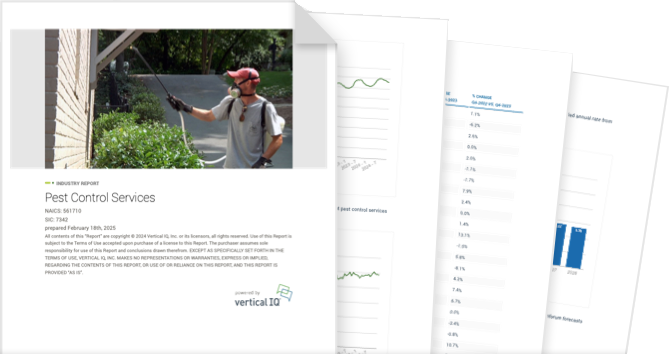Specialized Heavy and Civil Engineering Construction NAICS 237990

Unlock access to the full platform with more than 900 industry reports and local economic insights.
Get access to this Industry Profile including 18+ chapters and more than 50 pages of industry research.
Industry Summary
The 4,500 specialized heavy and civil engineering construction firms engage in a broad range of non-residential construction work. Major project categories include mass transit (railroads, subways); marine construction (dredging, navigational channels, locks, docks); tunnels; outdoor recreational areas (athletic fields, parks, trails, golf courses, campgrounds); conservation and development (dams, drainage canals, flood control); and harbor and port facilities.
Uneven, Seasonal Demand
Demand for specialized heavy and civil engineering construction services is uneven and seasonal.
Dependence on Government Funding
Demand for specialized heavy and civil engineering construction services is driven by public construction projects, which rely on government funding.
Recent Developments
Jun 6, 2025 - Trump Administration to Double Steel, Aluminum Tariffs
- Higher steel and aluminum tariffs could increase specialized heavy and civil construction project costs. On May 30, the Trump administration announced it would double the tariffs on all US steel and aluminum imports to 50%, according to Reuters. The increase took effect on June 4. The administration claims the higher duties will protect the US steel and aluminum industries. On May 29, the US Court of International Trade (CIT) ruled that the Trump Administration overstepped its authority in levying widespread tariffs and voided most of them, according to the Wall Street Journal. The following day, the US Court of Appeals for the Federal Circuit paused the CIT ruling pending further arguments. The Supreme Court could ultimately decide the case. In the meantime, the tariffs remain in place. Steel and aluminum tariffs were not part of the CIT ruling.
- The total value of construction put in place decreased 0.1% in April compared to March, according to the US Census Bureau. Conservation and development spending dropped 1.4%, and water supply projects saw a 0.1% drop. Spending on sewage and waste disposal increased by 1%. Associated Builders and Contractors (ABC) Chief Economist Anirban Basu said, “Construction spending slipped in April as headwinds like trade policy uncertainty, high interest rates, and tight lending standards continued to batter industrywide momentum. Nearly 22% of contractors reported tariff-related project delays or cancellations in April, and despite changes to certain import tax rates in May, policy uncertainty remains extraordinarily elevated.”
- Spending related to transportation projects - including rail, airports, and ports – is projected to rise 3% in 2025, 3% in 2026, 5% in 2027 and 2028, and 4% in 2029, according to FMI’s second-quarter 2025 North American Engineering and Construction Outlook. The American Society of Civil Engineers estimates transportation infrastructure needs will exceed $1 trillion by 2033. Construction spending for conservation and development projects is expected to drop by 1% in 2025, then rise 1% in 2026 and 5% annually between 2027 and 2029. Investments in dredging and coastal and intercoastal conservation are among the main drivers of conservation and development spending. However, the Trump administration's cuts to the EPA could impact conservation and development projects.
- The state of US infrastructure received a grade of C, according to a recent report card issued by the American Society of Civil Engineers (ASCE) that rates 18 infrastructure categories. The C rating was the highest grade since the ASCE began releasing the reports in 1998. The ASCE cited increased infrastructure spending through the Infrastructure Investment and Jobs Act as the primary driver for the grade improvement. In terms of heavy and civil infrastructure projects, on the high end, ports and rail received a B and a B-, respectively, while stormwater infrastructure got a D. Aviation infrastructure, which includes airports, received a D+. The authors of the ASCE reports urged leaders in Washington DC, “to continue sustained investment in infrastructure and build on progress made to improve infrastructure after decades of deferred funding and under investment.”
Industry Revenue
Specialized Heavy and Civil Engineering Construction

Industry Structure
Industry size & Structure
The average specialized heavy and civil engineering construction company operates out of a single location, employs about 18 workers, and generates $8.2 million in annual revenue.
- The specialized heavy and civil engineering construction industry consists of about 4,500 firms that employ almost 82,500 workers, and generate over $35 billion in annual revenue.
- The industry is concentrated at the top and fragmented at the bottom. The top 50 companies account for about 48% of industry revenue.
- Large firms include Herzog Contracting (rail), Railworks, Railroad Construction Company, Orion Group Holdings (water resources), and Great Lakes Dredge & Dock Corporation (water resources).
- The US is a “closed” market for dredging with government regulations restricting dredging operations in US waters to US-owned and operated vessels staffed by US crews.
Industry Forecast
Industry Forecast
Specialized Heavy and Civil Engineering Construction Industry Growth

Vertical IQ Industry Report
For anyone actively digging deeper into a specific industry.
50+ pages of timely industry insights
18+ chapters
PDF delivered to your inbox
